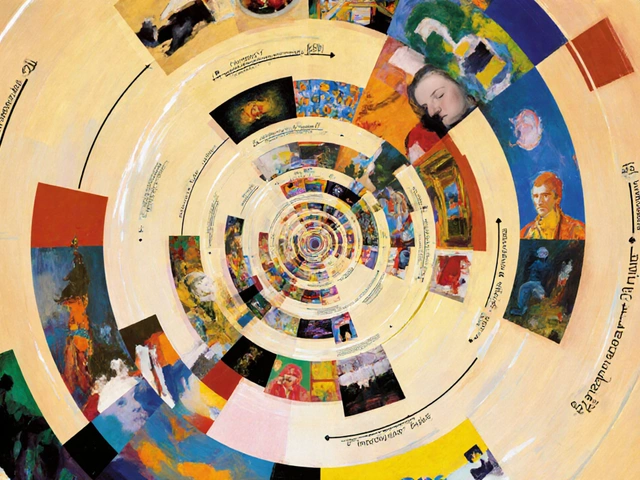When we talk about landscape paintings, the name Caspar David Friedrich often pops up. But why does he hold such a notorious spot in art history? Simply put, Friedrich had this knack for turning ordinary natural scenes into profoundly emotional experiences. His paintings aren't just pictures of mountains or oceans; they're deep reflections of solitude, spirituality, and even melancholy.
Perhaps it's the way he skillfully uses light and shadow, drawing viewers into this almost mystical world. Or maybe it's his bold compositions where humans appear small amidst the vastness of nature. Whatever the reason, Friedrich’s works have left an indelible mark on landscape art. Stick around as we delve into his early years, reveal his techniques, and uncover why he remains a rockstar in the world of art.
- Caspar David Friedrich's Early Years
- Painting Techniques That Stand Out
- Friedrich's Iconic Masterpieces
- Influence on Modern Artists
- Fun Facts and Legacy
Caspar David Friedrich's Early Years
Born in 1774 in the small town of Greifswald, which was part of Swedish Pomerania at that time, Caspar David Friedrich didn't exactly come from an artistic family. In fact, his father was a candle maker, far removed from the artsy life that young Caspar eventually embraced. Growing up, Friedrich faced significant personal challenges - losing several siblings early in life, which is said to have influenced his later works' somber tones.
Friedrich began his formal art education in 1794 at the Royal Danish Academy of Fine Arts in Copenhagen. While there, he studied the basics but also had the chance to explore beyond portraiture, which was the norm. It opened his eyes to the potential of landscape painting. A significant influence during this time was the up-and-coming trend of Romanticism, which focused on emotions and nature's beauty.
Education and Artistic Beginnings
Copenhagen was buzzing with ideas that shaped Friedrich's outlook on art. He was intrigued by the concept of the 'sublime', a popular theme in Romanticism. It's all about feeling small in the face of overwhelming nature, something that clearly echoes in his later works. By 1798, Friedrich moved to Dresden, a city at the forefront of cultural excitement at the time, laying the foundations for what would become his signature style.
Friedrich’s early work was marked by pencil and sepia ink sketches. The rolling hills, dense forests, and rugged coastlines of northern Germany were his first love and frequently appeared in his drawings. His talent soon gained recognition when he began creating large oil paintings that stood out from the crowd for their unique atmosphere and emotional depth.
Caspar David Friedrich wasn't just another artist but someone who changed the landscape (pun intended) of art forever. His early years were a testing ground, shaping a young man who was destined to leave an everlasting imprint on how we view nature today.
Painting Techniques That Stand Out
So, what makes Caspar David Friedrich's landscape paintings so mesmerizing? It's all in the techniques. For starters, Friedrich was a master of light and shadow. He knew exactly how to use them to create depth and mood, making scenes more dramatic and emotional. His manipulation of light often gives his paintings a mystical touch, drawing the viewer into the scene as if standing within it.
The Power of Composition
Another standout aspect is his composition style. Friedrich frequently used a technique called 'Rückenfigur', where a figure is seen from behind, contemplating the vast scenery. This not only gives perspective but invites viewers to join the figure in their silent reflection, enhancing the emotional impact.
Nature's Details
When you're looking at a Friedrich painting, you'll notice how detailed the natural elements are. From the growth of moss to the starkness of bare branches, his work captures the authenticity of nature. It's said this attention to detail stems from meticulous studies and sketches he did in nature before transforming them onto the canvas.
Color Strategy
Friedrich didn't shy away from using bold colors but balanced them to maintain the painting's realism. He used contrasting colors to highlight elements, such as blazing sunsets or looming storm clouds, giving life and movement to static scenes.
These techniques combined bring the landscapes to life. Next time you find yourself gazing at a Friedrich painting, take a moment to pick apart these elements. It’s a tall order trying to replicate his style, but understanding his techniques offers rich insights into why his art remains iconic.
Friedrich's Iconic Masterpieces
When it comes to Caspar David Friedrich, a few paintings stand head and shoulders above the rest, capturing the hearts of art fans and casual viewers alike. One such masterpiece that everybody seems to adore is "Wanderer Above the Sea of Fog"—it's basically the poster child for Romantic art. This painting shows a man standing on a rocky outcrop, gazing out over a sea of mist-covered mountains. It perfectly captures that feeling of wonder and introspection, letting the viewer get lost in their own thoughts.
The Sublime Nature of "The Sea of Ice"
Another jaw-dropping piece is "The Sea of Ice," also known as "The Wreck of the Hope." The painting depicts a shattered shipwreck trapped in an icy landscape, symbolizing the raw and sometimes cruel power of nature. This painting really drives home Friedrich's knack for using landscapes to convey deeper human emotions, like struggle and despair.
Tranquility in "The Monk by the Sea"
If you're after a more serene vibe, "The Monk by the Sea" is the way to go. It's a super minimalist piece that strips away all distractions, leaving a monk staring out over a vast, empty sea. This masterpiece is all about solitude and the smallness of man compared to the universe—a recurring theme in Friedrich's work.
Spiritual Overtones in "Abbey in the Oakwood"
"Abbey in the Oakwood" rounds out Friedrich’s best-known works. This eerie scene of monks carrying a coffin to a ruined abbey emphasizes life and death's cycles. The piece plays with lighting to give it a mystical, almost ghostly quality, framing the entire narrative without uttering a single word.
In pretty much all these works, landscape painting isn't just a backdrop; it's a full-blown character in the story. Friedrich's ability to make us feel through these scenes is the reason why his art endures. Dive into these masterpieces, and you'll quickly understand how he shaped art as we know it.
Influence on Modern Artists
Caspar David Friedrich isn't just one of the big names from the Romantic era; his fingerprints are all over modern landscape painting too. His approach to depicting nature as a space for spiritual reflection resonated well beyond his lifetime, echoing through galleries even today.
One of the key aspects where Friedrich shines is in his dramatic use of light and atmosphere. This has inspired contemporary artists like Olafur Eliasson, who plays with light installations to create immersive experiences that resemble Friedrich's landscapes brought to life. Eliasson may not paint mountains on canvas, but his installations do evoke the same awe and introspection.
Landscape painting as a genre owes a great deal to Friedrich's simple yet profound ability to capture the sublime. You can see traces of his influence in the works of artists like Anselm Kiefer, who explores themes of memory and history against vast, etheric backgrounds, reminiscent of Friedrich's emotional landscapes.
Friedrich’s Approach in Other Art Forms
Even photographers like Ansel Adams admired Friedrich’s ability to transform landscapes into emotional narratives. Adams’s black-and-white photographs of American national parks mimic, in a way, the silent grandeur that Friedrich celebrated in his paintings. Though the medium is different, the quest to capture the spirit of the natural world is a shared passion.
- It's not just painters and photographers, though. Film directors have also drawn from Friedrich's mood-setting techniques. Terrence Malick, renowned for his cinematic depictions of nature, often taps into similar themes of nature's vastness and the human experience.
Whether it’s through a brush or a camera, Friedrich's touch lingers, guiding modern artists to explore the boundless emotional depths of landscapes and instilling a deep respect for the majesty of the natural world.
| Artist | Medium | Influenced By |
|---|---|---|
| Olafur Eliasson | Installations | Light and atmosphere |
| Terrence Malick | Film | Emotional landscapes |
| Ansel Adams | Photography | Sublime nature |
Friedrich may have lived in the 19th century, but his legacy is alive and well, subtly guiding the hands and minds of artists across various mediums. And that's really why he remains significant – because the landscapes he painted are not just scenes, but experiences that continue to shape the world of art.
Fun Facts and Legacy
Let's dive into some quirky yet fascinating aspects of Caspar David Friedrich's life and work that you might not know. While Friedrich is celebrated today, it wasn't always sunny skies for him. In his lifetime, critics didn't always appreciate his unique style. He often faced criticism for his brooding, almost gloomy landscapes.
His Signature Approach
Interestingly, Friedrich had a signature way of painting that set him apart. He liked to highlight the backs of people staring out at nature, rather than painting their faces. This almost made viewers feel like they were part of the scene, sharing the same view as the figures in the painting.
Influence on Other Artists
Friedrich’s influence expanded far beyond his lifetime. Modern artists like Anselm Kiefer often draw inspiration from his dramatic use of light and nature as a spiritual element. You could say Friedrich set the stage for romanticism in landscape painting, a movement that has left roots in so many contemporary art forms.
An Artistic Revival
Despite the initial criticism, Friedrich's popularity surged in the early 20th century with the rise of existentialist and surrealist movements. His works were re-evaluated, bringing him the fame he deserved long after he had passed.
A Legacy of Inspiration
Many art schools and workshops today still teach his techniques and incorporate his philosophy into their curriculums, keeping his legacy alive. His paintings are housed in some of the world's most prestigious galleries, wooing art enthusiasts with their captivating beauty.
Caspar David Friedrich wasn’t just a painter; he was a visionary whose work defied conventional norms and pushed the boundaries of art history. His legacy continues to inspire, captivate, and provoke thought in art lovers around the globe.


